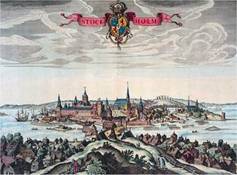Impacts of region-wide urbanisation on biodiversity in strategic environmental assessment
Impacts of region-wide urbanisation on biodiversity in strategic environmental assessment

Research leader: Berit Balfors
Participants: Ulla Mörtberg, Andreas Zetterberg
Key words: Strategic environmental assessment, biodiversity, landscape ecology, urbanisation
Project period: 2006-2011
Project description
The objective of the project is to develop knowledge and methods for biodiversity considerations in strategic environmental assessment (SEA). The project will mainly focus on effective methods for biodiversity analysis on landscape and regional levels. Problems that will be addressed concern habitat loss, fragmentation and degradation caused by large-scale urbanisation and infrastructure. A landscape ecological indicator system, based on requirements of sensitive species, will be developed for measuring habitat quality and connectivity in the landscape for species tied to defined habitat types, in a quantitative and systematic way. The study area is situated in the Mälardalen region. The base for the biodiversity considerations will be the Governments environmental quality objectives, concerning forest, agricultural landscapes and wetlands, which will be transformed into operational targets, relevant for the region.
Aim
The aim of the project is to develop knowledge and tools for the integration of biodiversity objectives in planning and decision making. The focus of the project is primarily on the development of effective methods for analysing the potential for biodiversity on landscape and regional levels. Problems that will be addressed include habitat loss and fragmentation caused by large-scale urbanisation and infrastructure. Based on target habitat types, a GIS-based indicator system will be developed, based on four main criteria, specialisation, resource requirements, dispersal capacity and sensitivity to disturbances, which correspond to properties of species that make them vulnerable to landscape changes. The indicator system will be applied in case studies on several scales, where large-scale urbanisation is taking place. The results will lead to conclusions on the ecological consequences of the plans on a landscape level, useful as decision support in SEA.
Cooperation
Stockholm Municipality: Prediction tools
Stockholm County Administrative Board: Regional Landscape Strategies
Office of Regional Planning and Urban Transportation: Landscape Ecological Analysis of the Regional Development Plan for Stockholm
Stockholm Resilience Center: Matrix Green Tool for Network Analysis
Publications
Zetterberg, A., Mörtberg, U., Balfors, B. 2010. Making graphy theory operational for landscape ecological assessments, planning, and design . Landscape and Urban Planning 95: 181-191.
Zetterberg, A. 2011.
Connecting the dots: Network analysis, landscape ecology, and practical application
. Doctoral Thesis in Land and Water Resources Engineering, KTH Architecture and the Built Environment, LWR PHD 1062, Stockholm.
